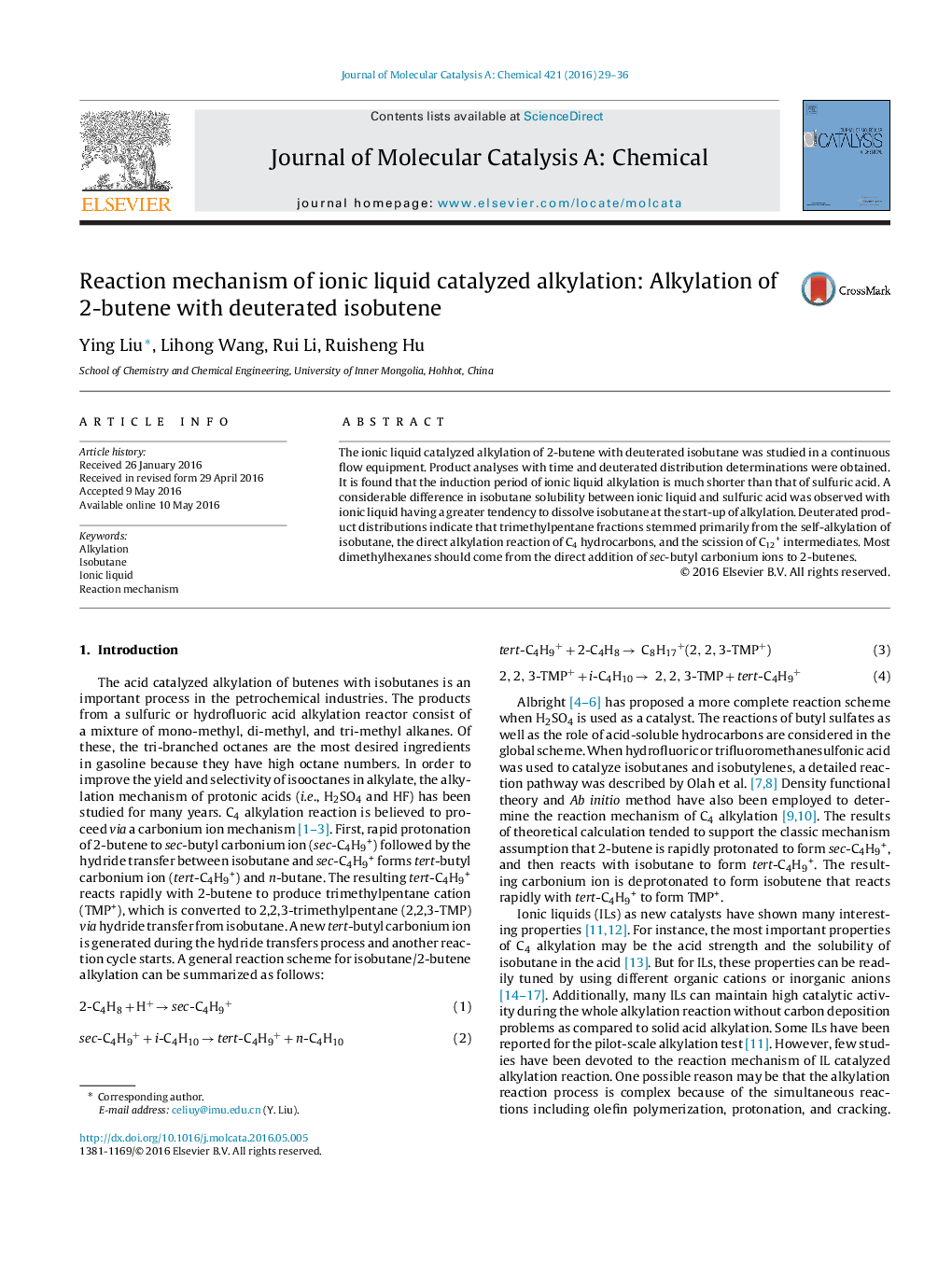| کد مقاله | کد نشریه | سال انتشار | مقاله انگلیسی | نسخه تمام متن |
|---|---|---|---|---|
| 64610 | 48363 | 2016 | 8 صفحه PDF | دانلود رایگان |
• Deuterated isobutane was used for investigating the reaction mechanism.
• High solubility of C4 leads to the induction period of ionic liquid very short.
• The scission of C12+ plays an import role for forming trimethylpentanes.
• Dimethylhexanes are formed primary by the alkylation of sec-C4H9+ with 2-butene.
• The formation of light and heavy ends should be attributed to the C12+ cations.
The ionic liquid catalyzed alkylation of 2-butene with deuterated isobutane was studied in a continuous flow equipment. Product analyses with time and deuterated distribution determinations were obtained. It is found that the induction period of ionic liquid alkylation is much shorter than that of sulfuric acid. A considerable difference in isobutane solubility between ionic liquid and sulfuric acid was observed with ionic liquid having a greater tendency to dissolve isobutane at the start-up of alkylation. Deuterated product distributions indicate that trimethylpentane fractions stemmed primarily from the self-alkylation of isobutane, the direct alkylation reaction of C4 hydrocarbons, and the scission of C12+ intermediates. Most dimethylhexanes should come from the direct addition of sec-butyl carbonium ions to 2-butenes.
Figure optionsDownload high-quality image (132 K)Download as PowerPoint slide
Journal: Journal of Molecular Catalysis A: Chemical - Volume 421, September 2016, Pages 29–36
